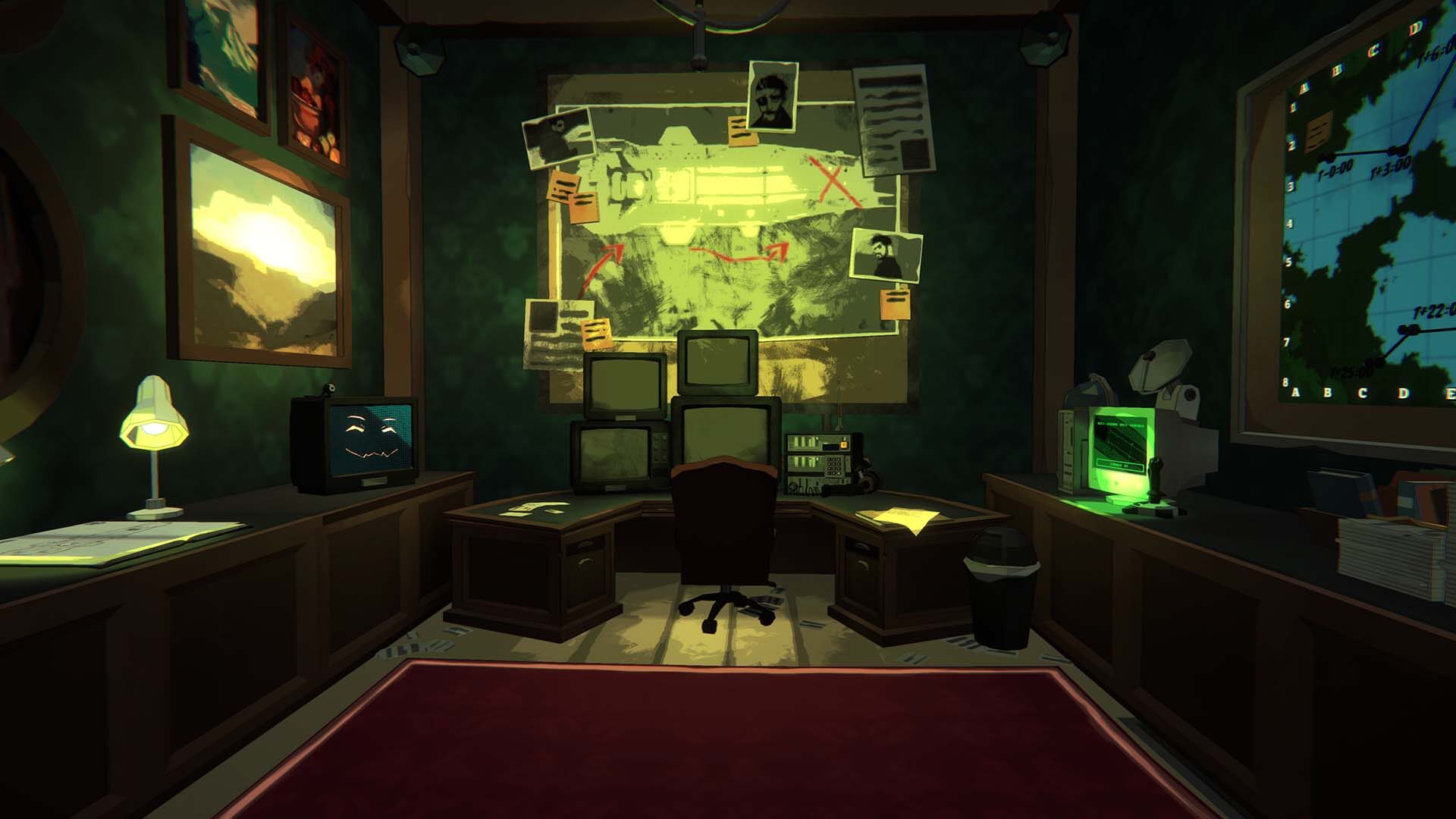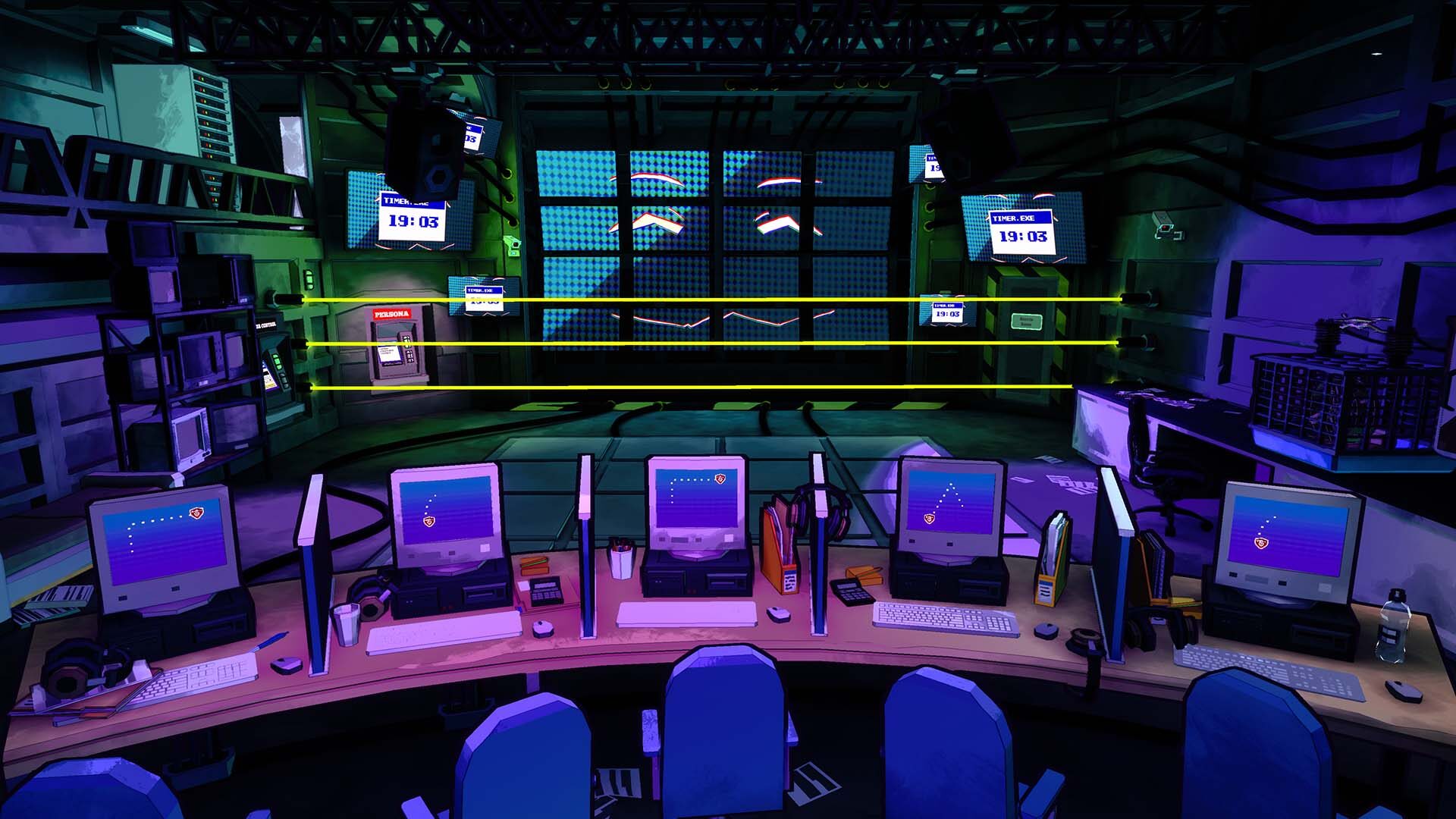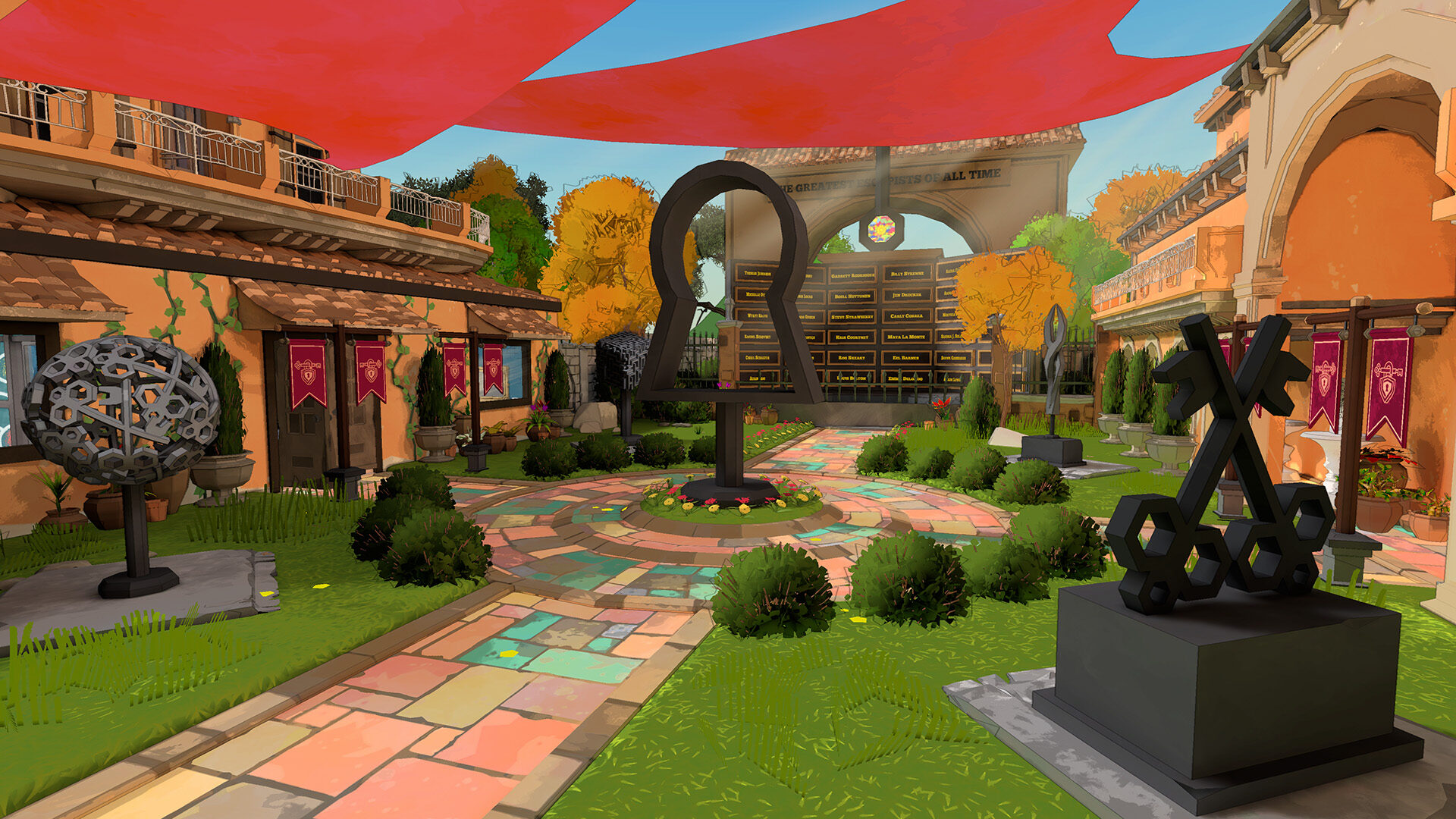“This puzzle sucks.”
If you’ve played enough video games, or been to enough escape rooms, you’ve almost certainly thought those words—if not actually said them out loud. It’s remarkably easy to lay an egg when you’re building a puzzle for someone else to solve, and that’s doubly true when it’s an environmental puzzle, one that’s presented without explicit instructions on what you’re supposed to be doing.
To make a good puzzle, you need to tick off a whole lot of boxes: You have to make sure the visual presentation of the puzzle is clear enough to hint at—but maybe not explicitly reveal—the objective. You have to put an original spin on the concept, so it doesn’t feel like a puzzle we’ve seen a million times before. You have to make sure there are enough intelligible clues for players to actually solve the puzzle, and that the clues spread out, numerous, and well-paced enough that reaching the solution feels like a process.
Finally, and most importantly, you need to leave what I’ll call a “solution gap”—a distance between what the clues reveal and what the solution actually is, which players need to cross for themselves. Make the gap too small, and the puzzle will feel pointless and obvious. Make the gap too big, and most of your audience won’t be able to make the leap. But find the Goldilocks Zone—make the gap just right—and players will feel the burst of creativity, the leap of logic, the eureka moment that’s at the heart of every good puzzle.
Which brings me to the first point I want to make about Escape Academy, the new first-person escape room adventure from Coin Crew Games: There isn’t a single bad puzzle in the whole damn thing. Seriously.

There wasn’t a single moment during my playthrough (our playthrough, actually, since I dragooned my not-a-gamer wife into being my co-op partner) that I thought that I was stuck on a sucky puzzle. It’s not that we breezed through the whole game, either. There were plenty of times that we had to take a step back and reassess, sometimes for a few precious minutes as the timer wound down, to get to the right answer. But we always got there. We never even had to resort to using the built-in hint system, and that’s not a brag in the slightest. It’s a testament to how well Coin Crew has tuned its puzzles and balanced the time limits on each level to keep things tense but achievable.
From a puzzle design standpoint, Escape Academy is all killer, no filler. It doesn’t just visit the Goldilocks Zone, it bought a house downtown. I want to ask these puzzles to marry me by hiding an engagement ring in a locked box and scattering clues to the combination around my apartment. In my mind, the puzzles—the most fundamental aspect of Escape Academy, the axis on which the entire experience turns—are close to perfect.
What I don’t mean to say, however, is that the whole game is perfect. Escape Academy is Coin Crew’s first release, and that inexperience shows in some technical and presentation elements. The stylized 3D graphics work well for the environments and puzzles, but not so much for human beings. Character models are strangely proportioned and stiffly posed, and the animations are ungainly. Coin Crew opted for lightly animated 2D illustrations during conversations, and the characters look much more polished in that form. So, to be fair, you don’t see the 3D models that often—unless you’re in co-op, in which case you’re going to watch your partner creepily shuffle around the whole game.

And honestly, I could take or leave the entire narrative side of Escape Academy. As a means for justifying the different escape rooms challenges, the premise does its job. You get recruited to enroll in what is essentially Hogwarts for escape room enthusiasts. You meet the teachers and a single rival student. Eventually, you unravel a conspiracy that threatens the school. Like I said, it’s fine as a thin justification for the gameplay. But you’re going to have a hard time caring about any of these characters or even the plot twists on more than the most superficial level.
Still, none of those elements really impact your enjoyment of the core puzzle-solving experience, so it’s hard for me to dock Escape Academy too much over them. But there’s one aspect of the game that does let down its puzzles, and that’s the controls. My wife and I played on Xbox Series X, and I have to say that Escape Academy does not feel great on a controller. I’m not enough of an armchair designer to say exactly what the issue is, but my general sense is that when you move the right stick to look around the environment or move the cursor you use to solve puzzles, there’s no aim acceleration. Instead, you’re just off to the races, which leads to a lot of awkward correcting and overcorrecting. There are some sliders on the settings menu that can let you tweak sensitivity, but I never managed to get them to a place I was totally comfortable with. And weirder still, there’s no option to change the default sprinting behavior, which requires you to keep the left stick clicked in the entire time you want to run. That hasn’t been the standard for over a decade now.
The control issues are far from fatal, but they do make the game more awkward than it should be and occasionally stop you from feeling fully immersed in the puzzles. I worry it may also make the experience a bit more alienating to non-gamers than it should be—because this is otherwise a phenomenal co-op game for introducing friends and family to the medium. My wife hadn’t ever played a first-person game before this, and while she soldiered on to the end, she never really got used to moving and looking at the same time. Learning to use both analog sticks is one of the biggest challenges for anyone unaccustomed to first-person games, and the jerky controls here only serve to make it even harder.

The only other thing that might turn people off of Escape Academy—and it really shouldn’t—is that the game isn’t very long. You’re probably looking at around five hours for an initial playthrough, but I have a hard time viewing that as a downside. At this stage in my life, I’d much rather have a quick and enjoyable game than one that’s stuffed with repetitive or less-engaging content just to pad out the runtime. More filler would only serve to make Escape Academy less killer.
But it is worth keeping in mind that you’ll probably be done after just one playthrough. While the game does allow you to replay older rooms, there’s not much of a point. The solutions are the same every time you play, which means a repeat-visit speedrun is more about memorization and corner-cutting than anything actually engaging. I tried out a few of the levels a second time, and apart from the amusement of beating the first room in under a minute and the second in a whopping 11 seconds, I can’t say I got much out of it.
Still, if you’re in the market for five great hours of solo or co-op fun, you could do much, much worse than Escape Academy. Any fan of escape rooms, or puzzle games, or couch co-op should give serious thought to enrolling.
|
★★★★☆
Escape Academy is an exceptionally well designed puzzle game, if not a flawlessly executed one. Developer Coin Crew Games has replicated the creativity and fine-tuned challenge of the best real-world escape rooms while amping up the fantasy and stakes in a way only video games can. But the studio’s inexperience rears its head when it comes to polish, with stiff console controls being the most obvious knock on an otherwise great experience. |
Developer Coin Crew Games Publisher iam8bit Presents, Skybound Games ESRB T - Teen Release Date 7.14.2022 |
| Escape Academy is available on PlayStation 5, Xbox Series X/S, PlayStation 4, Xbox One, PC. Primary version played was for Xbox Series X. Product was provided by iam8bit Presents, Skybound Games for the benefit of this coverage. EGM reviews on a scale of one to five stars. | |
